
Q, activation enthalpy, R gas constant, A geometric factor, Do diffusivity, r diffusive lengthscale, T temperature, t time.)Cort
Closure temperature, defined by Dodson (1973), is the temperature at which a mineral closes to diffusive loss of an isotopic system

Q, activation enthalpy, R gas constant, A geometric factor, Do diffusivity, r diffusive lengthscale, T temperature, t time.)Cort
An important part of studying metamorphic rocks is knowing when
they did various things such as heating, cooling, compressing, decompressing, and deforming.
Before dating, samples are carefully examined by all techniques that are known to provide useful information.
For example, cathodoluminesence can be used to evaluate episodes of growth during igneous and metamorphic processes:
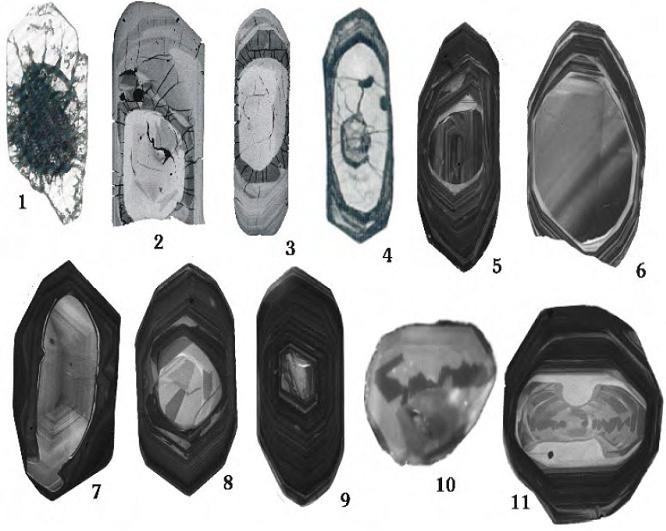 (Corfu et al., 2003).
(Corfu et al., 2003).
The highest-resolution dating method is thermal ionization mass spectrometry (TIMS). An example of a zircon separate and typical TIMS data (Krogh et al., 2011):
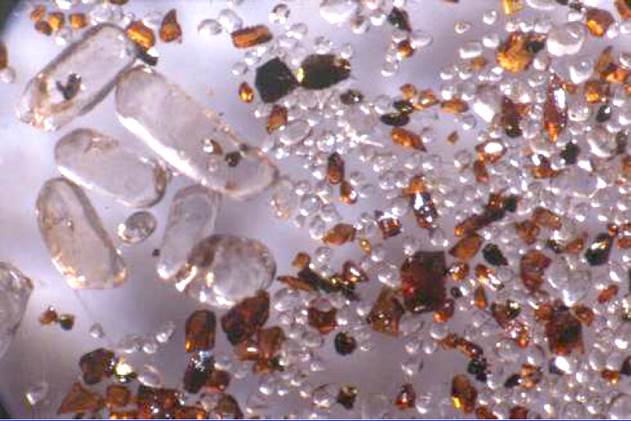

We can now date spots inside individual grains down to the 5 um scale. An example of titanite (Spencer et al., 2013):

Ion microprobes (shown here is the Sensitive High Resolution Ion Microprobe at Stanford) are used principally for U-Pb dating of zircons. The main advantage of this instrument is that it can measure 20 x 0.5 um spots in zircons; the main disadvantage is that there is extensive sample preparation time and each analysis takes ~15 minutes

Laser-ablation ICP mass spectrometers (shown here is the LASS facility at UCSB) are used for U/Th-Pb dating of many accessory minerals. The main advantage of this instrument is that it can measure 5 um spots in monazite, 15 um spots in zircon, and 30-40 um spots in titanite and rutile in <1 minute. the main disadvantage is that the pits are 8 um deep.
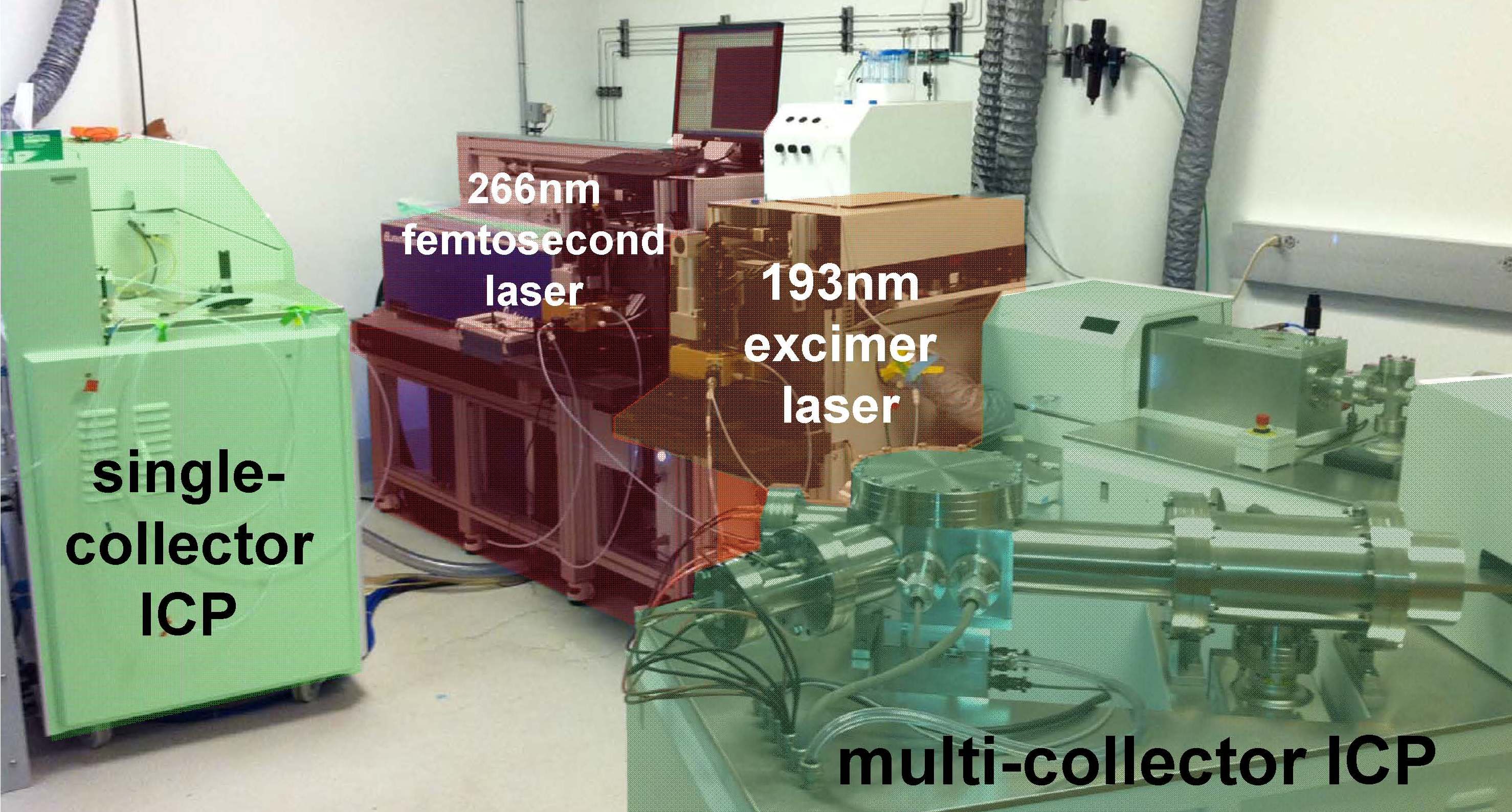
LASS dataset collected from a Madagascar zircon in <1 hr, showing 2.2-1.8 Ga inheritance and 620-500 Ma recrystallization.

LASS dataset from Greenland orthogneiss zircon showing garnet growth at 412 Ma.
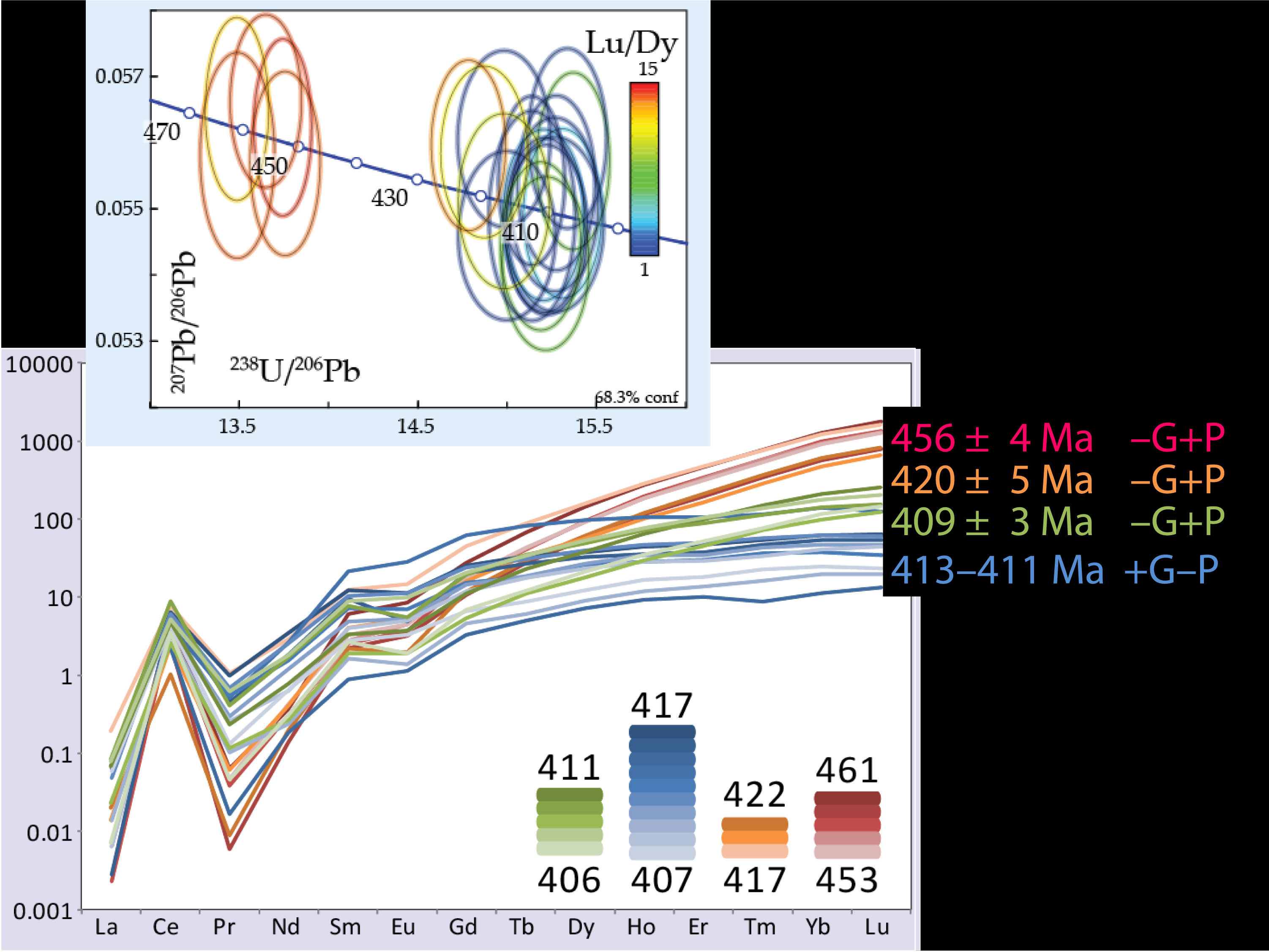
Example dataset collected from a Madagascar monazite in <1 hr by LASS.

Example LASS dataset showing changes in garnet stability time from a Norwegian monazite
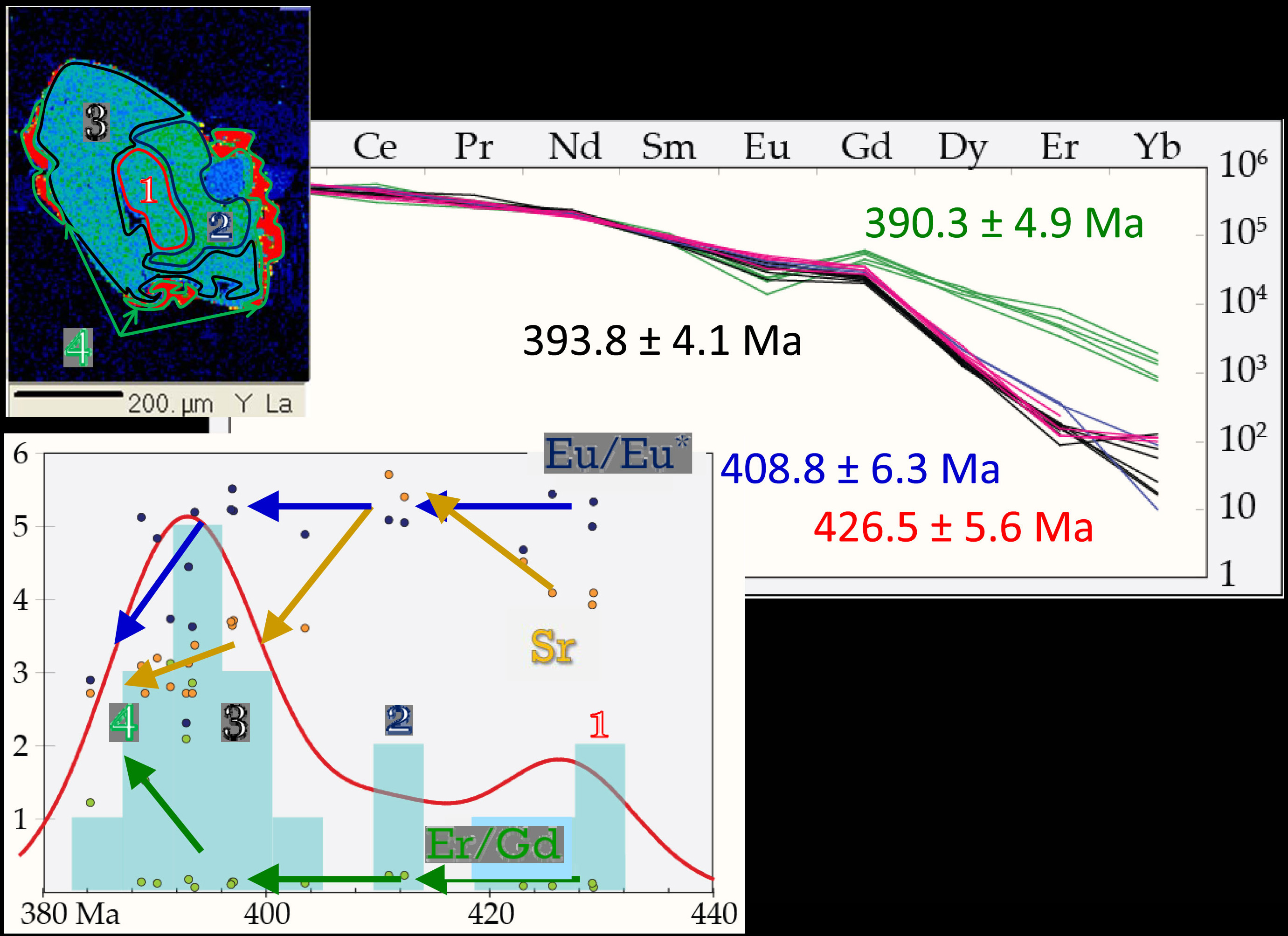
Example LASS dataset showing changes in garnet stability time from a Himalayan monazite

LASS also enables easy dating of problematic minerals like titanite (Spencer et al., 2013):
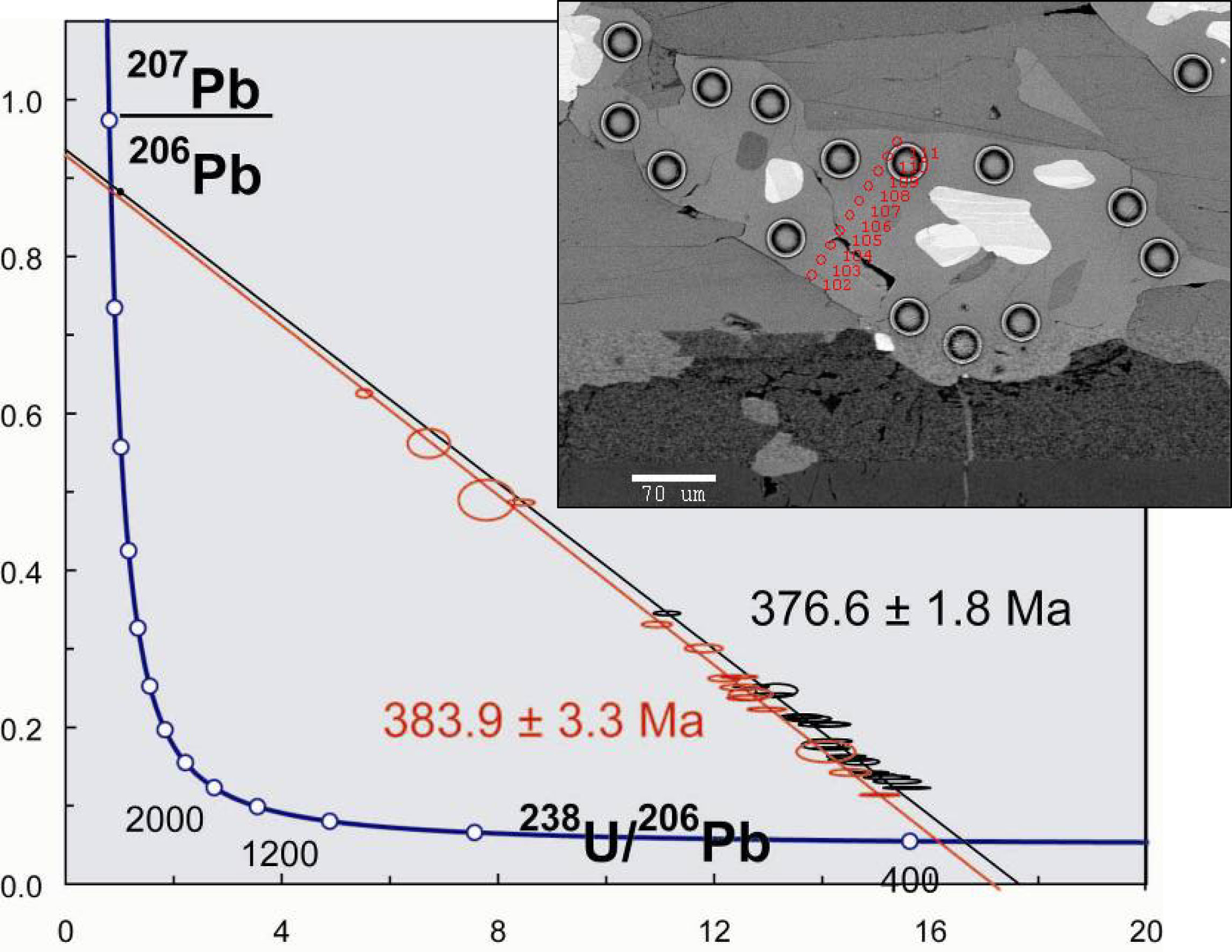
We can now even make campaign-style geochronology maps of orogenic belts (Spencer et al., 2013):
